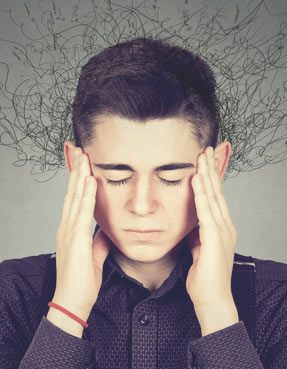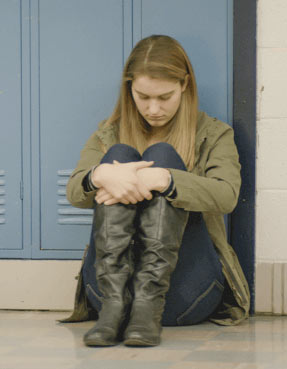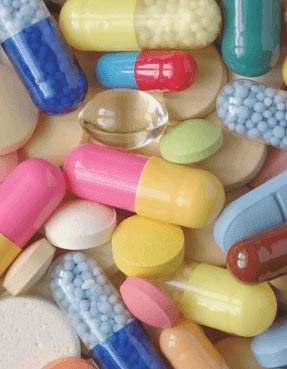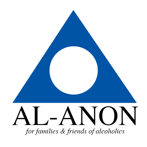As kids get older, they often start to question the life lessons they hear from parents and teachers. They become
more heavily influenced by the things they see on TV, the internet and social media. Teens listen to what
their peers say, and they pay attention to what celebrity role models do. As a result, they get mixed messages,
and they have to determine which information to believe.
Anti-drug messages such as “just say no” aren’t effective. Teens need concrete reasons to avoid alcohol and other
drugs. They need facts and evidence. Parents have to know what they’re talking about if they want their children
to listen.

Drugs Most Commonly Used By Teens
The most popular drugs that teens use haven’t changed much for the past five decades. Alcohol, marijuana and
tobacco consistently rank among the top substances of abuse among youth. But other perils have become popular
in recent years. The packaging and advertisements for alcoholic energy drinks, electronic cigarettes and
synthetic marijuana are designed to appeal to teens.
The abuse of medications such as cough syrups, anti-anxiety drugs, ADHD medications and prescription pain relievers
is less common, but the side effects can be life threatening. Less than one percent of teens use heroin,
crystal meth or cocaine regularly.
Percent of 12th-graders Who Used A Substance in the Past Month:
| Type of drug |
Prevalence |
| Alcohol |
33% |
| Marijuana |
23% |
| Electronic vaporizers |
13% |
| Cigarettes |
11% |
| Prescription stimulants |
3% |
| Prescription painkillers |
2% |
| Anti-anxiety drugs |
2% |
| LSD |
1% |
| Cocaine |
1% |
| Ecstasy |
1% |
| Inhalents |
1% |
Source: 2016 Monitoring the Future Survey
The percent of high school seniors who tried cigarettes has declined each year since 1998, and it reached an
all-time low in 2016. Electronic vaporizers also declined in popularity between 2015 and 2016, the only two
years that teens were asked about their use of the products.

What Effects Drugs Have on Teens
Most teens do not develop a substance use disorder after using drugs, but that doesn’t mean they aren’t vulnerable
to a number of other risks. The side effects of various drugs differ.
Side effects of marijuana include:
- Dizziness
- Increased heart rate
- Breathing problems
- Depression
- Anxiety
- Psychosis
Side effects of cigarettes include:
- Diabetes
- Pneumonia
- Vision problems
- Gum disease
- Heart disease
- Cancer
Side effects of alcohol include:
- High blood pressure
- Vision problems
- Weakened immune system
- Liver disease
- Sexual problems
- Alcohol poisoning
Side effects of stimulants such as ADHD medications or cocaine include:
- Irritability
- Rapid heartbeat
- Drowsiness
- Paranoia
- Headaches
- Anxiety
Side effects of opioids such as prescription painkillers or heroin include:
- Irregular breathing
- Dizziness
- Headaches
- Low blood pressure
- Seizure
- Overdose
Side effects of anti-anxiety drugs such as Xanax or Valium include:
- Confusion
- Fatigue
- Irritability
- Mood swings
- Insomnia
- Shaking
Addiction is the one risk that each drug has in common. Some drugs are more addictive than others, but with repeated
use, teens can become addicted to any drug.

How Drugs Affect the Teen Brain
The teenage brain is wired to be curious and seek news experiences. It’s in a constant state of development,
meaning it adapts to addictive substances more quickly than an adult brain.
Teen brains also have a mature reward system. They feel pleasure and pain in ways similar to adults, but the
decision-making areas of the brain are immature. Thus, teens are more likely to act on impulse or emotions
and less likely to fully assess situations.
The reward system works by releasing a small amount of a chemical called dopamine in the brain. Dopamine makes
us feel happy. It’s naturally released to reward basic behaviors necessary to survival such as eating, exercising
or having sex. Other behaviors that teens find pleasurable, such as playing sports, listening to music or
socializing, cause small dopamine releases.
Each drug affects the brain in a different way, but all drugs overload the reward system with dopamine. The brain
associates drug use with this positive reward, which causes teens to want to repeat the behavior. When teens
use drugs regularly, the brain repeatedly adapts to the presence of the drugs and associates it with positive
rewards.
Some people are genetically more vulnerable to this adaptation than others. They’re at a risk for
developing an addiction. In those teens, the brain associates drug use with such positive rewards that
the dopamine release caused by other activities no longer causes happiness. Drug use becomes a top priority
for the brain, and the parts of the brain in charge of self-control can no longer keep the reward system
in check.

Why Teens Try Drugs
Teens try alcohol or other drugs for a number of reasons that are influenced by several factors.
- Availability of drugs in the neighborhood
- Prevalence of drug use among peers
- Exposure to violence or trauma
- Parental alcohol or drug use
- Mental illness
- Poor impulse control
- Compulsive personality
One risk factor alone may not be enough to spur teen drug use, but a combination of several factors increases the chances that a teen will try alcohol or other drugs. Protective factors such as anti-drug messages in the community, extracurricular drug testing in school and positive parental influence can negate risk factors.
Teens use alcohol or other drugs for a number of reasons. They usually try addictive substances for the first time because of peer pressure or their own curiosity.
- To have fun
- To relax
- To feel good
- To forget about problems
- To relieve stress
- To look cool
- To fit in with friends
Teens who drink alcohol or use drugs have few barriers to prevent them. They aren’t afraid of getting caught,
and they have little trouble finding substances of abuse.

Where Teens Encounter Drugs
It’s easy for teens to access alcohol and other drugs. They can buy drugs at school or buy alcohol, cigarettes
or synthetic marijuana from gas stations with fake IDs. Drinking and drug use is common at parties. If parents
aren’t diligent, teens can steal prescription drugs from medicine cabinets or buy drugs on the internet and
have them delivered in discreet packages.
Even if you monitor who your child hangs out with, most teens know a friend of a friend who can access illicit
drugs or get them alcohol. They may work with young adults who are willing to buy alcohol, tobacco products
or e-cigarettes for them.
Youth are also exposed to alcohol and other drugs on social media. A 2012 study by the National Center on Addiction
and Substance Abuse found that nearly half of teens surveyed said they’d seen teens drinking or using drugs
on social media and that it seemed like they were having a good time.
Seventy-five percent of teens reported that seeing other teens drinking alcohol or smoking marijuana on social
media sites encouraged other students to want to use them to have fun.
Drugs at School
Despite their best efforts, educators can’t control everything that students bring on and off school property.
It isn’t just one or two bad apples selling drugs, though. You may be surprised at how prevalent drug trafficking
is on school grounds.
- 44 percent of high schoolers know someone who sells drugs at school.
- 52 percent said there was a place near school where students could drink or use drugs during the school day.
- 36 percent said it was easy to use drugs or drink during school without getting caught.
- 91 percent said marijuana
- 24 percent said prescription drugs
- 9 percent said cocaine
- 7 percent said ecstasy
The school day isn’t the only time students have access to addictive substances. Many parents underestimate what happens when their children attend parties.
Parties
A 2006 survey by the National Center on Addiction and Substance Abuse found that a third of teens and nearly half of 17-year-olds have attended a house party chaperoned by parents where teens drank alcohol or used other drugs.
- 15 times more likely to say illicit drugs were available
- 16 times more likely to say alcohol was available
- 29 times more likely to say marijuana were available
Parents
- 80% of parents said neither alcohol nor marijuana was available at teen parties.
- 98% of parents said they were present at teen parties at their homes.
- 99% of parents said they wouldn’t serve alcohol at their teen’s party.
Teens
- 50% of teens said they’d been to parties where alcohol or marijuana was available.
- 33% of teens said parent supervision was rare or nonexistent at parties.
- 28% of teens said they’d been to parties where both parents and alcohol were present.
Numerous studies show that when parents allow their teens to drink a few sips of alcohol or allow them to drink
at home, the children are more likely to drink outside of the home.

How Marijuana Legalization Affects Teens
Several states have legalized marijuana for medicinal and recreational purposes. Research isn’t clear on how
medicinal marijuana legalization affects teens. In Colorado and Washington, states that have legalized recreational
marijuana, youth marijuana consumption increased gradually between 2011 and 2014.
Nationally, the states that have legalized medicinal or recreational marijuana have the highest youth marijuana
consumption rates. But in most cases, the states had led other states in
marijuana consumption rates before legalization.
Nationally, teen marijuana consumption rates grew to a five-year high in 2015. Teen perceptions of the risks
associated with marijuana have also weakened considerably. More teens perceive no great risk from smoking
marijuana today than ever before.
 Addiction
Addiction
 Treatment
Treatment
 Faith & Religion
Faith & Religion
 Active Recovery
Active Recovery
 Our Community
Our Community





















